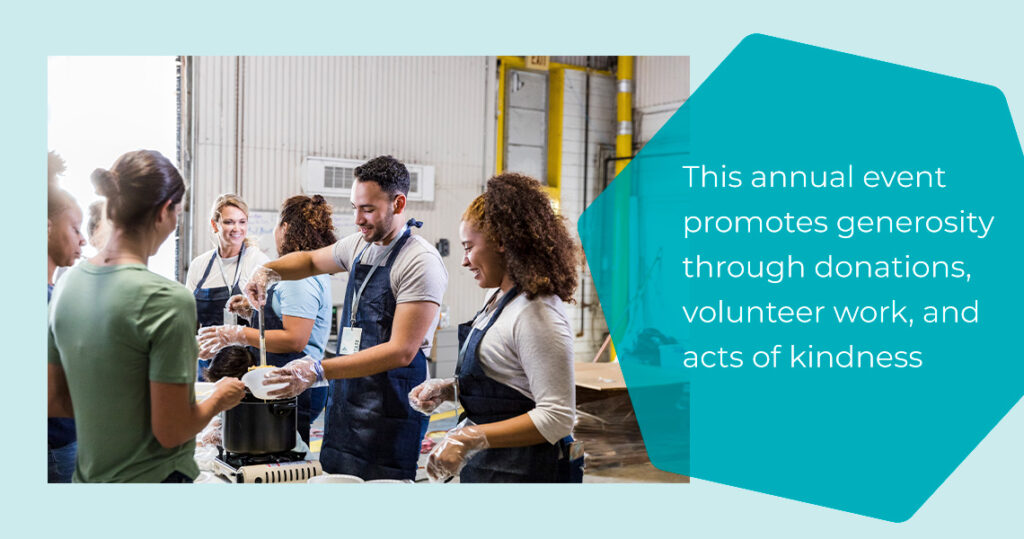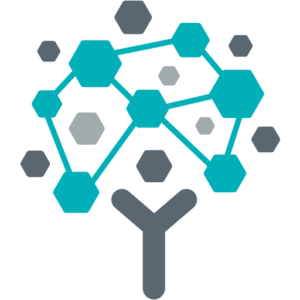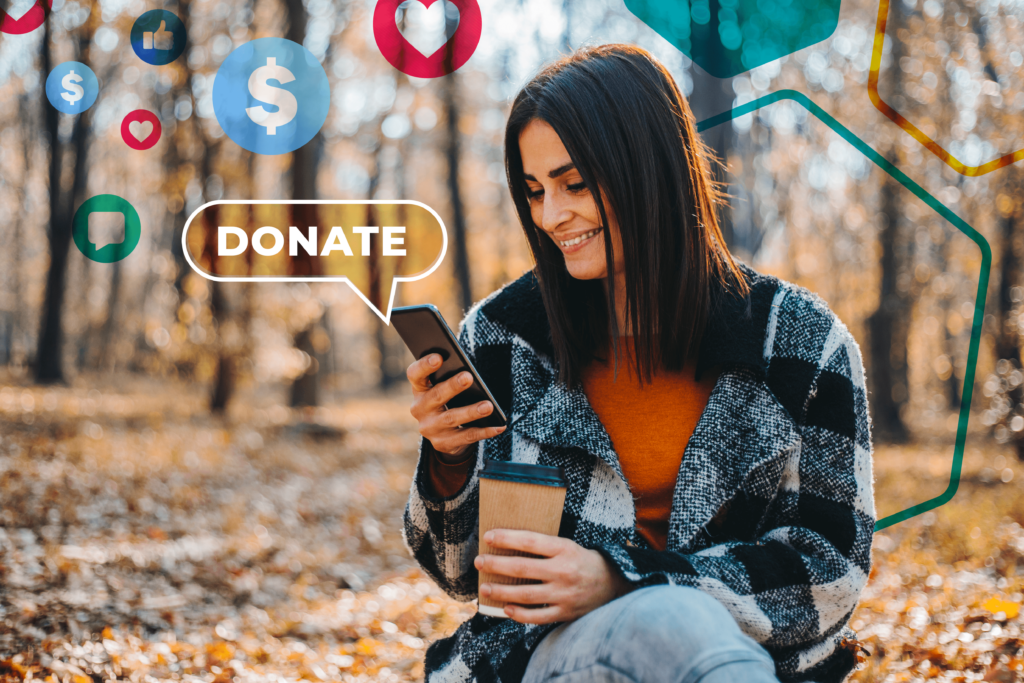Reading Time: 5 minutes
November is the start of the season of giving, and this time of year is one of the most important for nonprofits. #GivingTuesday is a day for nonprofits to reach out to their communities and fundraise for their missions. Understanding the significance of #GivingTuesday and how you can best prepare will help your nonprofit work toward and exceed your goals this fall.
What Is #GivingTuesday?
#GivingTuesday is a global philanthropic movement that emerged in response to consumer-driven events like Black Friday and Cyber Monday. It occurs on the Tuesday after Thanksgiving and represents a counterbalance to the typical commercialism of the holiday season. Established in 2012, #GivingTuesday encourages people to give back to their communities and charitable causes.

This annual event promotes generosity through donations, volunteer work, and acts of kindness. Nonprofits, businesses, and individuals worldwide participate, harnessing the power of social media and online platforms to raise funds and awareness for various charitable endeavors. #GivingTuesday embodies the spirit of compassion and collaboration, reminding us to support those in need and positively impact our society.
How to Prepare for #GivingTuesday
Getting ready for #GivingTuesday involves preparation several months in advance. You want to prepare your nonprofit for additional support received during this time. You can start planning for #GivingTuesday as early as August or September to give your team enough time to strategize and plan for the event. Here are some strategies to help you maximize your nonprofit’s #GivingTuesday potential.
1. Set Clear Goals
Establishing clear, measurable goals is the foundation of a successful #GivingTuesday campaign for nonprofit finance teams. These goals serve as a compass, guiding your efforts throughout the fundraising journey. Start by asking key questions: How much money do you aim to raise? How many donors are you hoping to attract? What specific projects or initiatives will these funds support? Your goals should be specific, realistic, and aligned with your organization’s mission and needs. You can also consider breaking goals into smaller steps to make tracking your progress easier.
2. Segment Donor Lists
Your donor base is diverse, with individuals who may have different motivations for supporting your cause. Segmenting your donor list allows you to tailor your communications and appeals to specific groups, making them more relevant and compelling. Start by categorizing donors based on their giving history, such as first-time, regular, or major donors. You may also want to consider demographic factors like age, location, and donation preferences.
Once you’ve segmented your list, create personalized messaging and appeals for each group. Highlight the impact of their contribution and how their support aligns with their interests. By showing that you understand and appreciate each donor’s uniqueness, you increase the likelihood of their engagement and contributions during #GivingTuesday.
3. Create Compelling Appeals
Stories are one of the most powerful tools in your fundraising arsenal. To capture the attention of potential donors, share real-life stories of individuals or communities positively impacted by your nonprofit’s work. Use multimedia elements like videos, images, and testimonials to make these stories come to life.
Your appeal should clearly articulate the urgency of the need and the tangible difference a donation can make. Paint a vivid picture of how contributions will be used to affect change and improve lives. You can also encourage donors to become part of your mission by highlighting the collective impact of #GivingTuesday, and emphasizing that their support is a vital part of a larger movement for positive change.
4. Prepare a Fundraising Plan
A well-structured fundraising plan ensures a smooth and effective #GivingTuesday campaign. This plan should include a detailed timeline of activities leading up to and during the event. Start planning well in advance to maximize your impact. Create a content calendar that outlines when and what you’ll communicate to your donors and supporters. Content can include email campaigns, social media posts, blog articles, and offline events or promotions. Countdowns are another great way to build excitement for your audience.
During the planning process, allocate responsibilities within your team to ensure everyone knows their roles and tasks. You can designate individuals to oversee various aspects, like email marketing, social media, and tracking donor engagement. Additionally, establish a budget for your #GivingTuesday campaign, determining expenses for marketing materials, technology tools, and any paid advertising. Having a clear plan and budget will help you stay organized and on track.
5. Leverage Peer-to-Peer Fundraising
Peer-to-peer fundraising is a powerful strategy to amplify your efforts. Encourage your supporters to advocate for your cause by setting up their own fundraising pages and rallying their networks. You can provide participants with the tools they need, like templates for fundraising messages, helpful infographics, and talking points for effectively engaging with friends and family.
You can use gamification to incentivize and recognize top fundraisers. Offer prizes or recognition for milestones achieved, like reaching a certain fundraising amount or recruiting a specific number of donors. Publicly celebrate and acknowledge the efforts of your peer-to-peer fundraisers to foster a sense of community and competition.
6. Optimize Your Online Donation Platform
Your online platform is the gateway for supporters to contribute to your cause on #GivingTuesday. Now is the time to make sure your platform is user-friendly and efficient. Test it thoroughly to ensure it can handle increased traffic without technical glitches. It’s also important to implement a mobile-responsive design to cater to donors who prefer to give via a smartphone or tablet. Simplify the process as much as possible and offer multiple payment options to accommodate your donors.
7. Prepare Thank You Messages
Acknowledging your donors after #GivingTuesday is essential. Plan how you will recognize and thank them, such as through personalized thank you messages. You want donors to feel like their contributions are seen and appreciated, and saying thank you can go a long way in donor retention and increasing the number of repeat donors.
8. Complete a Post-Event Analysis
After #GivingTuesday, it’s important to review and assess the overall outcomes of your campaign. Determine whether you met your fundraising goals and targets, and gather all relevant data and information related to finances, donors, social media engagement, website analytics, and more. Analyze the overall results of your #GivingTuesday campaign to see what worked well and what could be improved, then use these insights for future fundraising events and initiatives.
Maximize Your #GivingTuesday Success With MIP Cloud

During this season of giving, empower your nonprofit with the ability to easily centralize, track, and adjust your financials to fit your needs. With MIP Cloud, improved flexibility and customizability allow you to plan for your next giving event and boost your nonprofit’s overall mission and success.
Make data-driven decisions easily with real-time reporting capabilities for better, faster insights. Your organization can also keep information protected via state-of-the-art security measures, including encryption and regular security updates.
Ready to experience the future of financial management? See MIP Cloud in action. Book your demo today to see how we can streamline your financial processes.
Share this post





